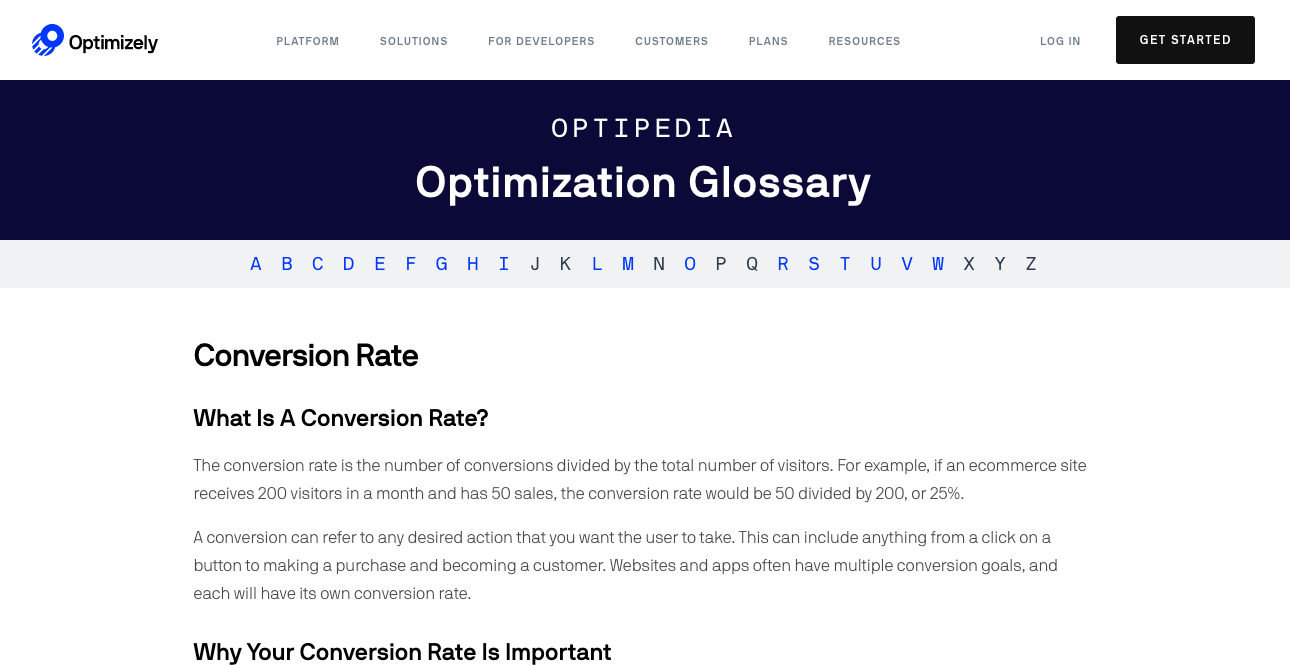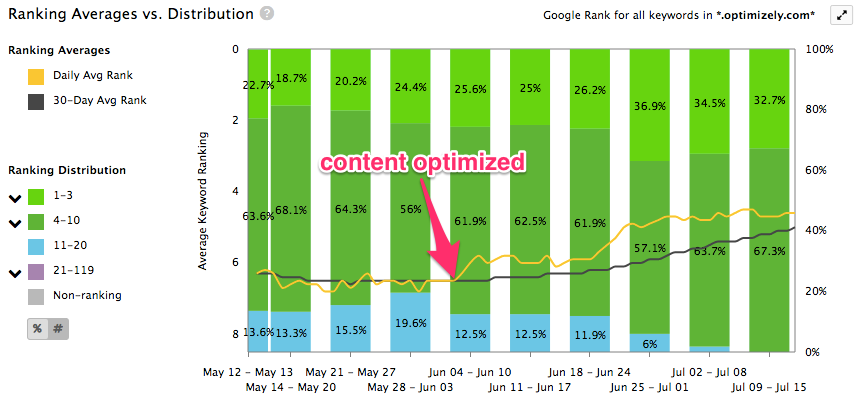Optimizely Increases Search Traffic by 52% to Blog and Glossary Articles
Optimizely helps companies do a/b testing and website personalization with their world-leading experimentation platform.
Their AI-powered personalization and experimentation platform encompasses A/B testing, multivariate testing, and server-side testing. The world's greatest brands choose Optimizely to win and compete in the digital economy, including Gap, StubHub, IBM, The Wall Street Journal, and more.
Producing lead capture resources
Optimizely publishes content on their blog and in the Optipedia, their industry glossary, to bring in new leads and SaaS revenue. It also helps them establish credibility, which in turn improves conversion rates.
To get the most out of their content, they aim to rank well in Google search. “Organic search is an important source of leads for our business,” says Takeshi, Optimizely’s web marketing manager. “We funnel search traffic into lead capture mechanisms, like free ebooks and webinars.”

One of Optimizely's most important glossary entries is on 'conversion rate'.
For Takeshi, investing in SEO for all of Optimizely’s content pays off over the long run, especially compared to the traffic and costs associated with social and pay-per-click ads.
B2B content can be technical
But not all of Optimizely’s content already ranks well in organic search. Whenever a piece sits on page 2, 3, or 4 of Google search results for an important keyword, they’re missing out on crowds of qualified traffic.
Creating content for lead acquisition purposes in the B2B industry is tough. It tends to be more technical and challenging to produce.
— Takeshi Young, Website & SEO Manager
This often happens when content goes out of date, or when its writer covered fewer topics than other competitive pieces did.
Takeshi wanted to update Optimizely’s content to increase search performance, and in the long run, find a reliable system to produce successful new content.
“Creating content for lead acquisition purposes in the B2B industry is tough,” says Takeshi. “It tends to be more technical and challenging to produce.” With a lot of content on his hands and not enough time, he searched for a faster, data-driven way to improve content for SEO.
The team moves quicker with Clearscope
Takeshi decided to try Clearscope as a smarter way to optimize blog posts and glossary articles. He chose 10 of them as an experiment, and for each one, he decided which competitive keyword they should rank for.
When he plugged the target keyword into Clearscope, it automatically revealed a prioritized list of topics that the article should cover in order to rank well. It also highlighted exactly which topics were missing in the original article. His team was able to quickly update the content and scan down the checklist before hitting publish.
Clearscope is a great way to sanity check content before publishing and make sure we’re writing what people want to read.
— Takeshi Young, Website & SEO Manager
52% more clicks in one month
The initial 10 pieces that Takeshi optimized with Clearscope saw an immediate increase in organic traffic. Just one month later, those articles got 52% more clicks and 52% more sessions from organic search.

All 10 pieces optimized by Clearscope began ranking in the top 10 results of Google.
The content also showed clear keyword rank improvements for valuable competitive terms, such as [lead generation ideas], [website optimization], and [landing page best practices]. Rankings improved by 29% a few weeks after optimization, and a handful of them quickly jumped to the front page of Google.

“I’ve trained our content marketing manager to use Clearscope for future pieces, because it’s a great way to sanity check content before publishing and make sure we’re writing what people want to read.”
Want to scale creating high-quality content?
If so, Clearscope may be for you. Uncover valuable keyword opportunities, write SEO-optimized content, and track content health with Clearscope.
We’re happy to show you around and answer your questions.
You can create an account today or request a personalized demo to learn more about Clearscope and how you can leverage our platform in your SEO strategies.